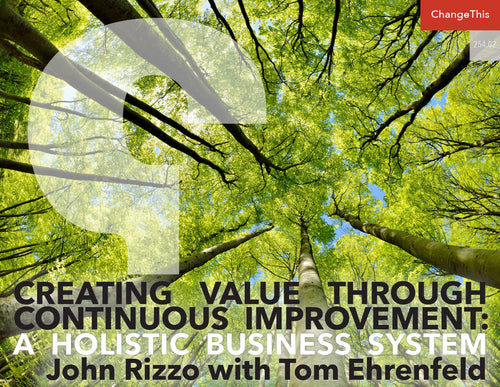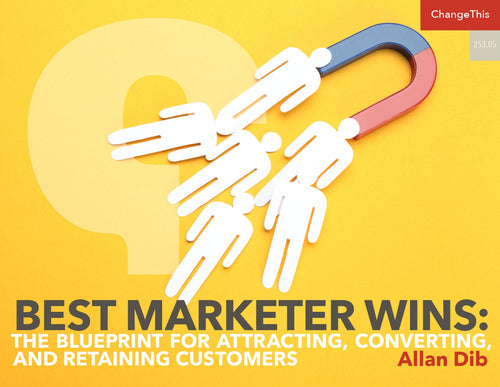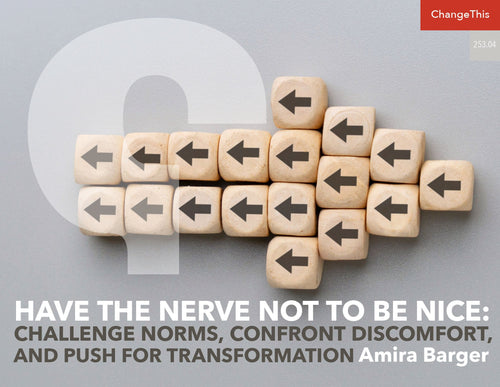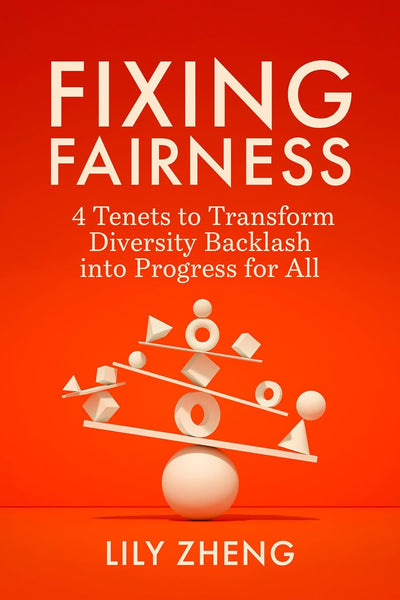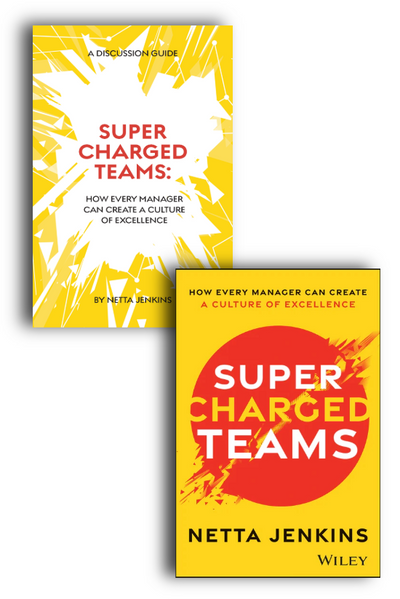Change is Hard: A true story of diversity and inclusion.
"Leading culture change requires a balance of skill and will: skills to address what’s uncomfortable or perceived to be unfair, and the will or desire to change it."

I grew up in a musical family.
From a very early age, I felt compelled to perform—to express myself, and to positively connect to, and move, others. I had hoped I could make my living in the world of opera and musical theater, and practiced diligently to get there, but my dreams were cut short about 10 years ago.
As I started to build my career as a professional vocalist, I struggled continually with vocal problems. It turned out that my instrument was prone to injury, and the only known remedy was a delicate but risky surgery directly on my vocal folds—which I endured, twice.
I will never forget the recovery period. I had to remain completely silent for two weeks, and when I was finally allowed to make a sound, what came out was a tiny squeak. Gentle humming just five minutes a day slowly brought it back into a normal register. After several rounds of this, even with a good surgical result, my instrument was forever diminished.
But I had come to the edge of something more significant that would go on to change my life. Because it is terrifying to lose your means to express yourself. The craving to be seen and heard, to share your story, to tell your truth is deeply human.
What began as a “Why me?” moment led me to realize that I would need my voice in a different way. The experience of losing it, and then seeking it, clarified my understanding of what I am here to do.
I was meant to use my voice. But on behalf of others.
As I sought a new career, I listened carefully to my mentors and colleagues who saw my love of being in front of audiences and helping others, and who encouraged me towards what would be my new field, and my professional home to this day—that is, consulting to leaders within organizations about how diversity drives innovation.
I spent some time in corporate roles in my new field, and then decided I could have the most impact from the outside. I founded my company, where I could dedicate my energy to building the more inclusive workplaces of the future, enabled by all kinds of talent, which would ultimately produce better business results.
Every day, my team and I work with our clients to build strategies to retain and develop upcoming leaders. But there are plenty who still don’t get it, and it’s frustrating to hear how many in today’s workplaces don’t feel comfortable “bringing their whole selves to work” (for instance, modifying or concealing certain physical or cultural aspects, like appearance, dress, language or education, or changing the pronoun used when referring to a same-sex partner).
We know through focus groups and surveys that this is impacting their ability, and willingness, to contribute—as well as their employers’ ability to leverage their full skills and talents to drive business forward.
This is a very personal topic for me, as it was my story, too.
During my corporate years, I held back, afraid I would be judged. In meeting me or working with me for the first time, you might presume my race, gender, generation, but you might miss or misidentify the less observable aspects of who I am, like my religion, educational background, or sexual orientation. I also bring diversity in terms of my cultural attitudes towards time, and communication style.
Depending on how comfortable I am in my environment, and what behaviors or attributes are valued in my workplace, I might or might not bring more of what has shaped my experience to the workplace.
The effort required to manage aspects of our identity, culture, and work styles, and in many cases filter them out of our professional personas to “fit in,” can take precious energy and focus away from our confidence, our contributions, and our careers.
When we can work as fully ourselves, we win, and the business wins.
“As we are liberated from our own fear, our presence automatically liberates others.” —Marianne Williamson
At some point in the early days of running my company, I had to liberate myself from my deepest fear, which meant coming out professionally as a member of the Lesbian, Gay, Bisexual, and Transgender community.
I had come out to family and friends years earlier, but declaring this publicly felt much riskier to me, as my name was now “on the door.” These were early days in the business. I perceived, at least, that clients and contracts that can make or break a small company, especially during a recession, were at stake.
I had been warned once before that I could never come out as who I was, as a performer, that I would be judged as “inauthentic” if I tried to play traditional roles. In those days, I knew of no successful “out” role models in the performing world. I was determined not to let this happen in my business.
As I now find myself in a successful and growing company, I finally have the freedom to lead from and with my truest self. Given I am my own boss, and still struggled with sharing my identity publicly, you have to ask how many in today’s workplace are carefully navigating around some aspect of their identity? And make no mistake, this impacts performance.
Now more than ever, companies need not only diversity of identity and culture, but diversity of thought, stemming from diverse industries and backgrounds—and to build inclusive organizations where all kinds of people can flourish.
The global business landscape is changing rapidly, and yet organizations still follow hierarchical organizational charts that stifle innovation and diverse voices. These voices have yet to be well-represented at all levels of the organization. To attract this talent, companies must not only understand and respect the needs and desires of a shifting workforce, but to walk the talk externally.
I credit my diversity—as a woman and LGBT professional among many other things— with developing sensitivity to the diversity in others, as an ally, and with the opportunity I have now to guide and advise businesses with credibility about future workplace trends. It has made me a better leader.
When we can work as fully ourselves, we win, and the business wins.
Awareness is the First Step
My advice is to make yourself uncomfortable every day. Sharpen your awareness of the diversity in you, and in others. Be an inclusive leader. And know the business case for how diversity and inclusion drive innovation. Organizations are depending on you.
I want to see women and people of color thrive in engineering. I want to see men teach school and become nurses and boys aspire to be them someday. I want to see all parents take full advantage of parental leave and feel less stressed, and more fulfilled, in how they are balancing all of their priorities and their health. I want less covering of stigmatized identities. I want workplaces that seek and invest in people with disabilities. I want us to work within our own organizations and across our society as a whole to dismantle the false binaries and unconscious biases that separate us so that we might celebrate together all the differences that enrich us— while still being aware of the importance of safety in community. But above all, I want each of us to feel welcomed, valued, respected, and heard at work—and in life.
I know it can be frightening to think about making these multiple and systemic changes, but we must, lest change happens without us—or to us. We have a window of time where we can get involved, deepening our leadership and broadening our horizons to include the rich, transformative power of difference.
Choosing to sit on the sidelines of this shift means that all the richness of your voice and your story will be missed in the evolution. The evolution will not be complete.
Change begins with you.
Fear of the unknown is not an excuse
Fear of the unknown—often about backlash and resistance—makes implementing and maintaining any new strategy demanding for managers and employees alike. When the topic is diversity, fear plays a big role for two critical populations: those who haven’t spoken up but who are being asked to offer more insights about their experiences of inclusion and exclusion, and those who feel they know little about the topic but sense they will be on the receiving end of criticism. This can lead to paralysis and no progress.
There are powerful tools to make these conversations more productive and certainly more enjoyable. Previous generations of diversity training were described as “shame and blame” sessions for a reason.
As a relatively young practitioner, I have heard many stories from before my time as a facilitator about multiday, tearful, deep and painful explorations of stereotypes that cast some in the room in an extremely hurtful—and not always accurate—light. While those programs were powerfully transformative in helping many confront their privilege for the first time, we have, thankfully, moved toward a conversation that includes all voices and honors all experiences and points in the journey, without devolving into an “us and them” paradigm.
We acknowledge that those with greater privilege have a unique opportunity to lead from a place of allyship, to stand for and drive outcomes that many lack the positional power or social capital to lead. Leadership today comes with this added responsibility.
The ability to lead inclusively is a top competency for leaders in the new age. From the factory floor to the executive suite, all have a role to play and are asked to stand up and get involved in the best inclusion efforts. No one in the workplace should feel that his or her voice isn’t included, but we can’t always rely on those whose voices are absent to do “all the changing.”
A Basic Equation
“When we speak, we are afraid our words will not be heard or welcomed. But when we are silent, we are still afraid. So it is better to speak.” —Audre Lorde
Whenever I talk to a group about change, most people stiffen with worry, concerned about the kind of change I might mean. I understand the feeling. Change is vague, seemingly limitless, and it’s uncomfortable, even scary, to think that something you’re familiar with may be at risk of going away, especially for reasons you do not fully understand. This is especially acute if that change could take something—you’re not sure what—away from you.
So let me begin by easing the tension. When we talk about “change” relative to diversity and inclusion, we’re talking about something as simple and obvious as how our workplaces adapt to the opportunities and challenges current and incoming employees encounter every day in their work and lives. This is the basic equation of what makes workplaces, well, “work.” While it might be simple and obvious as a focus, unfortunately we don’t do it very well.
Regardless, to avoid becoming obsolete, our workplaces and business practices must evolve alongside society and its prevailing culture. We have no choice. So change, in not only the conceptual sense but from a practical point of view, is not only beneficial to a company’s success; it’s vital. As we say, change is the only constant—or another favorite: change or die.
Profound and lasting organizational change toward more diverse and inclusive cultures can be very hard to get right.
Training has, historically, been a go-to solution for culture change, but it’s only one tool in what needs to be a much larger and multifaceted arsenal. And when not handled in the right way, it can be counterproductive, which demonstrates the delicacy of this topic and the issues that it raises for people.
A January 2016 article in the Harvard Business Review stated:
“The most commonly used diversity programs do little to increase representation of minorities and women. A longitudinal study of over seven hundred US companies found that implementing diversity training programs has little positive effect and may even decrease representation of black women.”
The rhetoric of diversity that sometimes shows up in traditional diversity training can result in inaccurate and counterproductive beliefs. In a recent experiment, it was determined that some training not only makes white men believe that women and minorities are being treated fairly—whether that’s true or not—but it also makes them more likely to believe that they themselves are being treated unfairly.
Sadly, this type of data is commonly used to refute the usefulness of training. I would argue that training design and approach matter enormously; our firm has had great success leading programs that are properly customized and buttressed by the right change-management practices that focus on organizational change and the role of the leader in taking concrete steps to lead the conversation about inclusion.
We are emphatic about the fact that no training exists in a vacuum. Without understanding the pros and cons of a company’s prevailing culture, workforce engagement, workplace dynamics, and the potential impact a younger, increasingly diverse talent pool will have on all of it, many traditional diversity training seminars will feel outdated, out of touch, and worst of all, insincere.
As a Gen-Xer specialist in the space, I’ve been able to witness firsthand how today’s company leadership, who largely hail from the baby boomer generation, is failing to connect with today’s workforce, despite good intentions. It’s very difficult for us to step outside our worldviews, and yet step outside them we must.
Organizations are failing to tap into the wide variety of values, beliefs, and needs of the multiple generations in the workplace as they update their approaches.
For example, the failure to develop internal culture and workforce strategies alongside societal changes has severely diminished traditional companies’ success in recruiting talent and engaging new and existing workers rattled by the transition to corporate life and the bureaucracy. If a company is unable to engage today’s workforce, it’s most likely the result of not developing new strategies capable of accommodating the needs and wants of a new age.
Considering the overwhelming number of technological, economic, social, and generational changes worldwide just within the last two decades, it’s understandable that large companies are struggling to pivot with the impact, but it’s not excusable.
Part of the work of inclusion is helping those already in the workforce to feel safe bringing more of themselves to work, versus what they have done historically, such as downplaying parts of themselves for purposes of assimilation. Companies need every single person’s knowledge, skills, and overall input, but employees won’t bring all of this unless there is a trusting relationship between employer and employee.
Where and how and why a company begins to take steps toward this looks different for every company. What’s most important is to start—somewhere.
The Origins of Change
“Owning our story can be hard but not nearly as difficult as spending our lives running from it.” —Brené Brown
You never know how, or when, change is going to come, but we do know one thing: it’s inevitable. When change comes to companies that sign up for it, the why—and its origins—are critical.
Somewhere, somehow, someone has raised the flag, signaling for help because the workplace seems riddled with invisible problems that can neither be solved internally nor ignored.
Let’s explore more closely where the appetite for change begins to better understand the diversity and inclusion problems that today’s companies experience most frequently. We call them change originators. They are prevalent in companies small and large across virtually every industry, and range from personal motivation to reputational pressure to bottom-line sales.
Sometimes all are present in one company, which just means even more energy for change; but sometimes, all you need is one to begin the process.
CHANGE ORIGINATOR: THE CEO
“I want us to do better, and I know it starts with me.”
When we begin work to create and launch diversity and inclusion efforts, I always ask about the CEO. Invariably these days, the CEO is usually driving the conversation on the topic, and that’s an immeasurable benefit (almost a necessity) to the initiative’s success.
Cultures change from the top, and leaders need to speak often, and consistently, about the environment they expect. There is direct accountability between a leader and the next level or two down, and each CEO can and should set clear expectations around culture, behavior, and the workplace environment.
Every movement made at the top of the house—everything that is said, as well as what is unsaid or not talked about—will cause ripple effects throughout the organization.
CHANGE ORIGINATOR: THE ECOSYSTEM
“We’re feeling the pressure from the people we do business with.”
One of the most exciting emerging business cases for having inclusive workplace cultures where diversity is a priority is that the ecosystem surrounding the company is starting to exert pressure.
When seeking a vendor partner, customers and clients issue requests for proposals (RFPs), which are, essentially, large-scale bids for work. RFPs are dreaded by many in the consulting world because they are exhaustive and run the supplier through the gauntlet; however, buyers are starting to ask questions about a bidder’s diversity metrics, programs, and progress and are becoming a compelling change tool.
In the bid itself for a whole host of unrelated goods and services the buyer wants to procure, the buyer also wants to see evidence of organizational commitment and some traction on diversity. All bidders are judged on their ability to answer these questions, and they are sometimes even given a relative percentage score for each section of the RFP.
Given that it has the potential to so tangibly hurt the bottom line, it can be motivational for companies—especially the C-suite—to feel the financial penalty of inaction.
CHANGE ORIGINATOR: THE MARKETPLACE
“Our demographic make-up doesn’t always reflect the markets we serve.”
Reflecting your market’s demographics can be a powerful impetus for a diversity and inclusion initiative. Companies have, sometimes, unwittingly created insensitive products or approaches to new markets that misread or fumble the ethnicity, gender, culture, or geographic issues at stake.
This is particularly easy to do if the leadership team, and the layers of direct reports beneath them, are principally white; principally men; principally very similar in education, background, and experience to one another; and likely not reflective of a particular target customer community.
At JBC, we recently received an inquiry from a regional construction company that works with one of our large retail clients. The retailer, a forward-thinking company on issues of diversity and inclusion, had expressed concern about the complexion of the construction of the company’s leadership.
A quick glance at the latter’s website showed an overwhelmingly white and male team. The CFO-turned-budding-diversity-champion at the construction company had given us a call as he had been charged, of course, to protect the contract and investigate what could be done.
It was dawning on them that they would need to change the composition of their leadership team to reflect the communities they served and the customers with whom they did business. Their clientele was now demanding it. It is better to not wait for this kind of pressure.
CHANGE ORIGINATOR: THE EMPLOYEES
“Our senior leadership and/or our board don’t reflect the rest of our workforce.”
Not seeing yourself and people who share your identity—however you define your identity— reflected in any leadership roles at the company you work in can cause pain, frustration, and ultimately, disengagement on the part of employees who long to see themselves and their identities in positions of leadership.
Promising employees who look at the org chart and don’t see themselves wonder whether there is a path to leadership for them.
When a high-profile or executive-level leader leaves—and if that person is diverse in ethnicity, a woman, an “out” LGBTQ executive—I have seen fast and broad ripple events through the employee population. They imagine the worst and internalize a message that “people like me can’t be successful here.” This is often the net effect of the departure, even if the executive’s separation from the company might not have had anything to do with identity or the fact that he or she is “the only” of a particular background at that level, in that company.
There was a high-profile departure of an out executive at one of our technology-company clients; I was working with the company’s LGBTQ employee resource group at the time and had a bird’s-eye view of the unintended impacts that can happen.
For a little background, as is true for many LGBTQ networks in the corporate arena, this group maintained an official “public” mailing list and also a “bcc” list, meaning there were still many who wanted to stay informed but not go public about their membership in the group due to fears about being “out” at the company. When this executive left suddenly, many on both lists interpreted it to reflect poorly on the company’s “true” support of LGBTQ talent versus its stated support, which, in the case of this company, was very strong.
This was one of those companies with many, many awards by all the big names, and walked the talk, too. As news spread of the executive leaving, I heard anecdotally that many on the bcc list became afraid of even that list (are corporate lists ever really secure?) and asked to be removed, and some on the public list did the same in the days after the departure, effectively going underground.
I share this story often to communicate, especially to executives, how delicate employee engagement truly is, especially for diverse talent who are constantly scanning the horizon, trying to discern if they are genuinely supported, or if it’s just lip service.
CHANGE ORIGINATOR: HELP WITH THE “HOW”
“We know why we need to be better; we just don’t know how to get started.”
A company that says its leadership is clear on the why for change might seem like the optimal starting point. When we, as consulting partners, can spend less time and effort making the business case (the why) and move directly to designing strategy and execution (the how), we breathe a sigh of relief. We think to ourselves, Now we can really get to work.
An understanding of why diversity is important, however, can vary from person to person: How deep is that commitment, for each leader, and in concrete terms, for the company? Lack of clarity and varying levels of buy-in and a sense of urgency can fragment senior teams, who need to unify and speak with one consistent voice on the topic to create the momentum needed to shift an entire company in a new direction. We need leaders to investigate the problem, confront the pain points with honesty and openness, invest time and thought into their own how, and execute on it, individually and as a group.
We need them to own the how; the figuring-it-out part of the journey is where they develop ownership and put their so-called skin in the game. I am happy to provide the roadmap, but their involvement in its development is critical.
As a consultant, I relish being handed the wheel to a company’s diversity vehicle, but culture change around diversity demands a strong, authentic, consistent hand and voice from each internal senior leader and from the team, articulating their own narrative and their commitment to the work of inclusion. We work hard to get them as excited in describing the promise of diversity. We have often worked with senior leadership teams to help them articulate their personal value propositions for this work and have armed them with strategies, behaviors, and language to lead the efforts.
Only senior leadership teams can make it real and make it resonate, but they need to find a connection point that excites them—an angle they can internalize and believe in.
There is no one answer for every company.
Leading culture change requires a balance of skill and will: skills to address what’s uncomfortable or perceived to be unfair, and the will or desire to change it.
Talking about diversity and inclusion can be painful, awkward, and fraught. It can be a delicate conversation that may seem to lead in exhausted, pointless circles or into an abyss where everyone is dissatisfied, offended, and angry.
But we have to risk that conversation if we want to move forward.
About the Author
Jennifer Brown is an award-winning entrepreneur and owner of the strategic leadership and organizational management firm, Jennifer Brown Consulting (JBC). As a leading diversity and inclusion expert, speaker, and social equality advocate, Jennifer’s workplace strategies have been employed by some of the world’s top Fortune 500 companies and nonprofits to help employees bring their full selves to work.
Jennifer’s groundbreaking work in talent management, human capital, and intersectional theory have redefined the boundaries of talent potential and company culture.
Her latest book is Inclusion: Diversity, The New Workplace & The Will to Change. Learn more at jenniferbrownspeaks.com.






